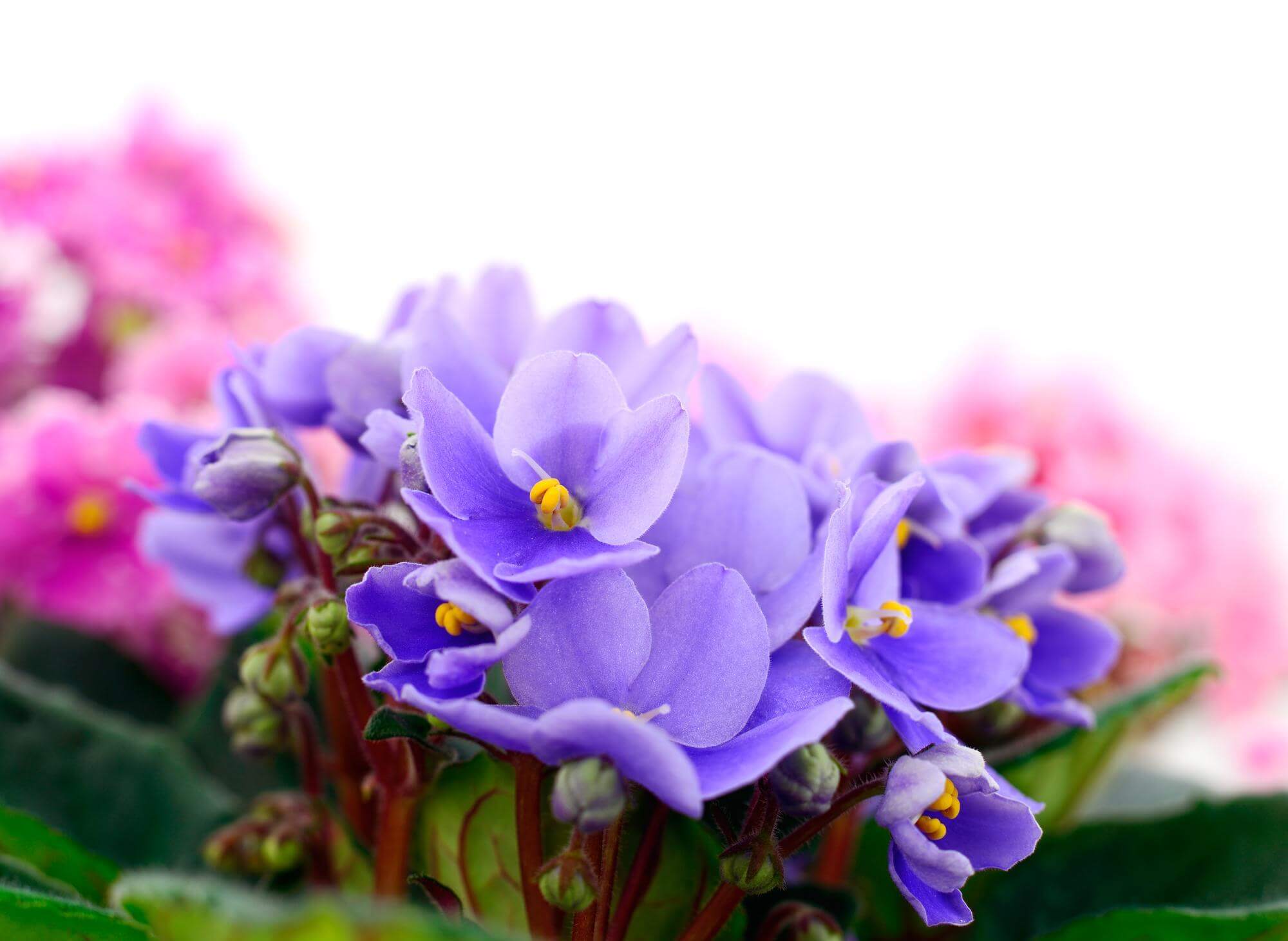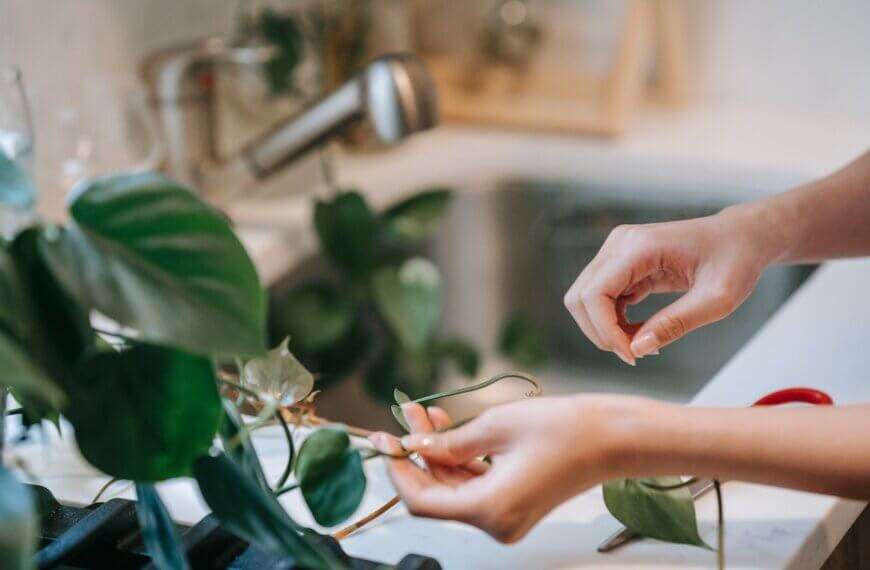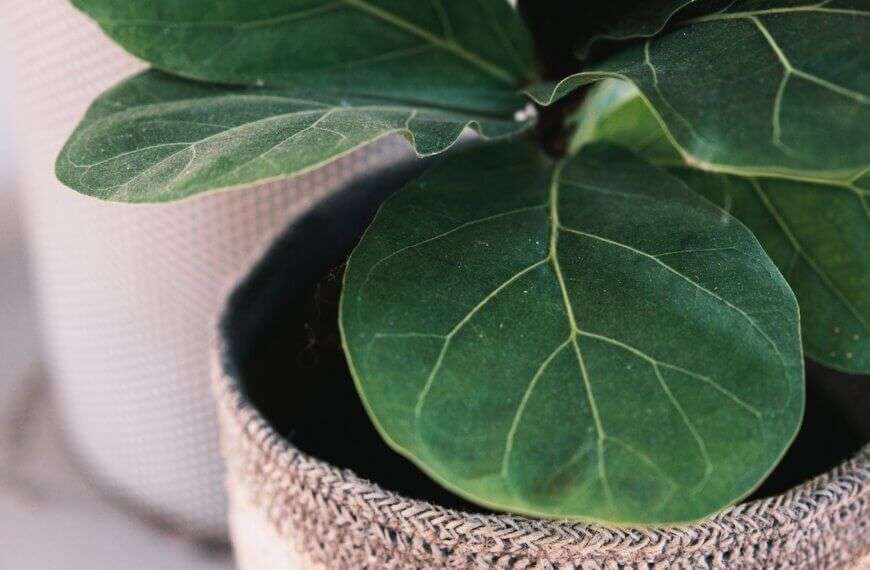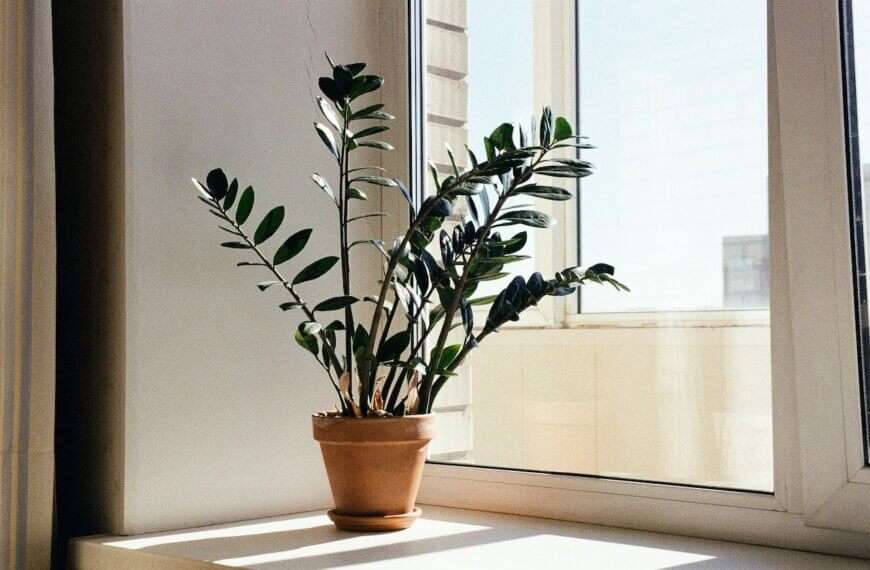- Understanding African Violets
- Watering African Violets
- Potting African Violets
- Lighting and Temperature for African Violets
- Common Issues and How to Solve Them
- Propagating African Violets
- Arranging and Displaying African Violets
- Conclusion: Maintaining and Enjoying Your African Violets
- Frequently Asked Questions
Understanding African Violets
To better care for African violets, start with grasping their origins and characteristics, as well as the various types they come in. Master caring for these fascinating indoor plants by creating the ideal growing conditions. This section titled “Understanding African Violets” with sub-sections “Origins and Characteristics of African Violets, Types of African Violets, Ideal Growing Conditions for African Violets” will provide all the solutions you need.
Origins and Characteristics of African Violets
African Violets are a unique species of flower native to Tanzania and Kenya. They have fuzzy leaves and come in many vibrant colors. They’re perfect for indoor gardens! For the best results, keep the temperature and humidity levels consistent.
It’s not just their looks that make African Violets so special – studies suggest they may help filter out harmful toxins from the air. Plus, there are over 20,000 registered cultivars of African Violets with different sizes, colors, and shapes.
The American Violet Society reports that African Violets are one of the most popular houseplants around the world. Ready to learn all about them? Let’s explore the different types of African Violets!
Types of African Violets
Let’s explore African Violets! These houseplants have velvety leaves in varied shades. Miniature African Violets are small – the size of a nickel – and come in many colors. Standard African Violets are larger with different shapes and hues to liven up your home. Trailer African Violets have lovely blooms on long stems that can be hung or placed high to cascade down.
Some varieties have special features. Variegated foliage is green with white splashes or veins. Recently, a passionate gardener won an award for their rare Fantasia variety, with multi-petaled blooms in pink and purple. African violets love humid conditions.
Ideal Growing Conditions for African Violets
African Violets love the warmth of their natural home. These plants need indirect light, moderate humidity, and well-draining soil. Keep the temperature between 65-75°F and don’t put them too close to air con or windows. Keep the soil moist, not soggy – overwatering can cause root rot. Fertilizer every 2-3 weeks helps flowers and leaves blossom.
The African Violet was found in Tanzania in 1892 by Baron Walter von Saint Paul-Illaire, and named after Princess Louise Caroline Alberta. It became popular in Europe and America quickly, due to its easy care and beautiful blooms.
If your African Violet could talk, it’d plead for the right amount of water – too much and it’ll drown, too little and it’ll shrivel up like a raisin.
Watering African Violets
To care for your African violets, it’s important to know how to water them correctly. With “Watering African Violets” section from “How to Care for African Violets” article, you’ll get a complete guide to watering your plants. This section includes “Watering Frequency and Techniques,” “Watering Time and Amount,” and “Use of Fertilizers and Nutrients” as solution to provide proper care to your African violets.
Watering Frequency and Techniques
African Violet Watering Tips – Sing While You Water!
Do you want your African violets to stay healthy and vibrant? Here are 3 tips to help you water them correctly:
- Check the soil moisture before watering. If it feels dry, that’s your cue to start.
- Use room-temp water that’s been sitting for a day, or rainwater from a container.
- Water thoroughly and empty any excess water from pots/saucers.
Be careful not to over-water, as it can cause root rot. Implement these tips for optimal health.
Time to put on your favorite rain-song and give your African violets some love!
Watering Time and Amount
Watering African Violets – Knowing the Optimal Time and Amount
To better care for African Violets, understanding the ideal time and amount of water is key! Here are some useful tips:
- Frequency: Water once a week, or when topsoil feels dry.
- Quantity: Depends on size & type of pot, and climate. Aim to saturate soil.
- Temperature: Lukewarm water is best.
- Avoid wetting leaves. Pour water at edge of container.
- Ensure adequate drainage.
- Self-watering devices can be helpful.
It’s worth noting soil texture. The right potting mix (with perlite, vermiculite, sphagnum moss, etc.), can help maintain plant health.
One gardener learned this the hard way. Before a seminar on plant care, his collection was mostly unhealthy. After adjusting his techniques, his violets were alive and kicking in days!
Bottom line? Give your African violets some extra love (and nutrients) – otherwise they may become drama queens!
Use of Fertilizers and Nutrients
To maximize growth and health of African violets, you’ll need to provide appropriate fertilizers and nutrients. Here’s a guide on essential components for the plant’s growth!
| Nutrient | Description | Benefits |
| Nitrogen | Stimulates leaf growth and development. | Boosts plant size and enhances flower color. |
| Phosphorus | Nurtures root development and flower production. | Leads to healthier roots and brighter blooms. |
| Potassium | Assists stress tolerance, disease resistance and water regulation. | Enhances overall plant health and strengthens stems. |
Caution: Too much fertilizer can damage African violets. It’s best to administer a balanced fertilizer once a month during active growth. Make sure to follow instructions on the label. Don’t forget to test your soil pH level too.
When applying fertilizer, first water the plants. Also, use liquid fertilizer at half strength to limit the risk of chemical buildup or burn.
To ensure your African violets thrive, create a fertilization routine during active growth. Plus, follow specific seedling care tips. With proper care, time and patience, your care for African violets will thrive!
Potting African Violets
To pot your African violets and ensure their health and growth, you need to choose the right soil, pot, and follow proper transplanting and repotting methods. In this section of “How to Care for African Violets,” you’ll learn how each of these sub-sections contributes to the overall vitality of your plants.
Choosing the Right Soil
For successful African violet growth, selecting the right soil is key. It must provide sufficient moisture and drainage for aeration. Here are some recommended soils and their characteristics:
| Soil Type | Description |
|---|---|
| Peat-based mixtures | Moisture-retentive, but can compact. |
| Vermiculite-perlite mixes | Boosts drainage and aeration, stops root rot. |
| Sphagnum moss mixtures | Good mix of water and drainage for growth. |
Container size and type also matter for optimal growth. Small containers are best as mature plants don’t need much water. When transferring plants to new pots, take care not to damage the roots or disturb stability.
Adding natural fertilizers like worms or fish emulsion aids soil fertility without disrupting nutrient balances.
With the right soil and pot, African violets will blossom in any houseplant collection – though finding the right one can be like finding a needle in a haystack!
Choosing the Right Pot
Ensure your African violets grow optimally by potting them correctly! A table of recommended pot sizes for different plant sizes and growth mediums is included below.
| Plant Size | Growth Medium | Recommended Pot Size |
|---|---|---|
| Small | Soil | 4 inches |
| Water | 3 inches | |
| Medium | Soil | 6 inches |
| Water | 5 inches | |
| Large | Soil | 8 inches |
| Water | 7 inches |
For best results, use pots with drainage holes. Terracotta or glazed ceramic pots are also suitable. Don’t let the fear of missing out on optimal growth stop you – pick the right pot for your African violets now! Transplanting and repotting them is like giving them a new lease on life – just like when you moved to a new city and left all your exes behind.
Transplanting and Repotting
African violets need special care and attention. Transplanting and repotting them is essential for optimal growth. Here’s a guide:
- Lift your African violet out of its pot without damaging the roots.
- Check for rot or disease and trim as needed.
- Put the plant in a larger container with the right soil mix, and press down around the roots.
Note: African violets don’t like too much pot space, so don’t rush their repotting schedule.
Be careful with watering when reviving your African Violet. Under-watering will make them wilt, and overwatering will cause root rot. Keep soil moist, not waterlogged, and use low-calcium water at room temperature.
For houseplants to grow, they need indirect light, moist but drained soil, and warm temperatures (70-80°F). Give the necessary care to keep your African violets blooming! Don’t let poor office décor stop you. With this guide, you’ll have magenta bursts of joy in no time! Happy planting!
Lighting and Temperature for African Violets
To ensure the health of your African violets, proper lighting and temperature are crucial. In order to solve this issue, you need to understand the benefits of natural and artificial light, the ideal temperature range to care for African violets, and ways to protect them from extreme temperatures.
Natural vs. Artificial Light
African violets need a mix of natural and artificial light to thrive. Here’s a comparison of the two:
| Factors | Natural Light | Artificial Light |
|---|---|---|
| Intensity | Intense from sun | Varies with bulb |
| Duration | Depends on earth | Controlled by user |
| Spectrum | Rich in blue + red | Limited spectrum |
| Distance | Changes throughout day | Consistent from source |
Lighting affects the size, shape, and color of African violets. Natural light is best, but not always possible. Window glasses can filter out some of the required spectrum for growth.
Botanists have studied plants’ light needs for decades. It affects gene expression, impacting fruit development. If your African violet could talk, it would tell you to give it a cozy spot on the windowsill.
Ideal Temperature Range for African Violets
African Violets love a temperate climate between 18-24°C or 65-75°F. That way, they can grow and bloom all year long without any issues. Rapid temperature changes can cause damage to the plant, so it’s best to keep them away from drafts, air vents, and radiators.
In hotter climates, open doors or windows for more ventilation. African Violets need an environment with no direct sunlight and a consistent temperature to stay healthy.
Pro Tip: Use a thermometer to monitor the room temperature accurately. This will help maintain a temperature range that African Violets need to thrive.
Protecting African Violets from Extreme Temperatures
African violets need moderate temperatures and good lighting to grow properly. Temperature fluctuations and direct sunlight can damage their leaves, so keep them away from drafts and open windows. If grown indoors, temperatures between 60-75°F are ideal. It’s also important to water them correctly. Room-temperature water should only be used when the soil is completely dry. According to research, temperatures between 55-70°F increase flowering time for African violets. Finding the right balance is key for keeping African violets healthy and vibrant – like a tightrope walker with a green thumb!
Common Issues and How to Solve Them
To care for African Violets with a focus on solving common issues, explore the three sub-sections to understand the ideal solutions. These include pests and diseases that pose a threat to your plant’s health, how to maintain the beauty of your plant’s leaves and flowers, and how to troubleshoot any problems that arise along the way.
Pests and Diseases in African Violets
Pests and diseases are a huge challenge for African Violet fans. Things like mealybugs, spider mites, and thrips can cause a lot of damage. They suck sap, harm the leaves, and spread diseases. Fungal infections like Root Rot and Powdery mildew can make the violets weak and collapse. Bacterial Leaf Spot is caused by high humidity and warm temps. It shows yellow spots on leaves, then they turn black, which stops photosynthesis.
Clean hands before touching the plants. Check for pests when moving African Violets. I once saw my leaves turn yellow and brown spots. I knew it could be Bacterial Leaf Spot. Quick action saved my violet! But keep in mind, even experts can’t fix a plant that’s been neglected!
Maintaining Healthy Leaves and Flowers
Ensure your garden’s vibrancy with proper care of Leaves and Flowers! Here’s how:
- Water regularly – keep the soil moist but not soaked.
- Keep plants in well-lit areas.
- Use fertilizers that provide essential nutrients.
- Don’t overcrowd plants for airflow & to prevent fungal infections.
- Trim off yellow or dead leaves – they may attract pests.
For weather protection:
- Decrease watering frequency in colder months.
- Use shade cloth in summer to help plants with pigments.
Cyclamen & Begonia are ideal for conservatories. Troubleshooting garden problems can feel like a therapy session with the same complaints coming up again & again!
Troubleshooting Common Problems
Faced with issues? Troubleshoot! Root-cause analysis, software updates, and patches can help. Good software = no errors. Try expert advice and utilize online forums. Proactive steps = less outages. Patience and maintenance needed.
For example, an organization had a peak-hour crash that cost them money. It took root cause analysis and hardware audits to identify the issue, which was fixed with routine maintenance.
If only my problems were as easy to fix as African violets, I’d have a greenhouse full!
Propagating African Violets
To propagate African violets successfully, you need to know the right techniques and timing. You should also take care of the new plants as they grow. In this part, you will learn about the methods of propagation and the appropriate timing and season for propagation. You will also get insights into how to care for your newly-propagated African violets so that they thrive.
Methods of Propagation
African violets can be multiplied using various reproduction techniques – both sexual and asexual. The most popular method is leaf-cutting, where a leaf is cut from the parent plant, dipped in rooting hormone, and planted in growing media. Division, suckers, tiny offshoots taken from the base; and crown division, splitting the center of the plant, are other methods.
Before planting, let the cuttings sit for a few days to form calluses around the wounds. Plant them in a plastic cup with clear wrap to keep humidity high, and place them under fluorescent lights. Water regularly, but not too much. Providing good drainage and fertilizing every two weeks will also help the success rate. Propagate African violets at the right season for the best results.
Timing and Season for Propagation
Propagating African Violets – Time and Season Matters!
It’s possible to propagate African Violets any time of year. But, for greater success, consider the season when doing so.
- Spring is an ideal time. Plants have more energy with warmer weather and longer days.
- Summer can work, but better in a cooler, shaded spot or with artificial light.
- Fall/Winter should be done indoors or in a greenhouse, with light and temp control.
Extreme temperatures can stress the plant and decrease its chances of survival.
Pro Tip: Use well-draining soil mixtures for even better results!
Voila! You’ve just successfully propagated African Violets!
Care for Newly Propagated African Violets
Propagating African violets? Need to take extra care of them! Here’s how:
- Water properly – keep soil moderately moist and use a spray bottle.
- Give them bright, indirect light.
- Make sure temperature is 65-75°F. Plus, don’t let them near cold drafts or radiators.
Fun Fact: There are over 20 species and thousands of African violet hybrids! So why not create a squad of these amazing plants for your space?
Arranging and Displaying African Violets
To arrange and display your African violets, the solution lies in choosing the right container, display area and creating an attractive display. The right container is key to your plant’s survival, while the right display area brings attention to your plant. By creating an attractive display, you can enhance the beauty of your African violets.
Choosing the Right Container
Choosing the right vessel for displaying your African violets is key to making them look great and keeping them healthy. The ideal container should fit the root ball, have good drainage while still holding moisture, and look good with the plant’s size and colour.
African violet fans have lots of choices when it comes to containers. Here are some good ones:
- Ceramic pots: strong and come in different colours; great for small varieties.
- Plastic pots: lightweight, affordable, and retain moisture well; suitable for large varieties.
- Glass containers: beautiful and make striking terrariums; any size can work, but need careful watering since they have no drainage holes.
Most growers also recommend unglazed terra cotta pots, which let the roots get good air circulation.
When picking a container, don’t forget to think about where it is, how much light it gets, and the humidity. Also, don’t overcrowd plants – make sure your container is the right size for the plant’s growth rate.
Using the right container for your African violets adds life and vibrancy to any space. Don’t miss out on the benefits of proper container selection!
Choosing the Right Display Area
To make African violets look amazing and grow healthy, you must choose the right spot. Think of light, humidity, and temperature when deciding. Here’s a table with some potential spots for displaying African violets based on their lighting and humidity needs:
| Display Area | Lighting | Humidity |
|---|---|---|
| Living Room | Bright, indirect sunlight | Moderate humidity |
| Study Room | Indirect sunlight | Slightly higher humidity |
| Kitchen | Low to medium intensity light | High humidity |
Beware of extremes in any of these variables. Too much or too little light can cause stunted growth or leaf discoloration. Too much or too little humidity can lead to root rotting or plant wilting.
Also, avoid drafty areas or spots near air conditioning vents. These can cause temperature changes that can be fatal to African violets. Experiment with different places until you find the perfect one.
Finally, don’t forget to show off your African violets! With the right care and placement, they will bloom multiple times a year! Arrange your African violets like a tiny botanical gallery – alive and ever-changing.
Creating an Attractive Display
African violets are a gorgeous home addition! To make your display really stand out, try these tips:
- Pick containers that match your decor and provide enough room for growth.
- Group different varieties or colors in clusters to create an interesting focal point.
- Use stands or risers for taller violets.
- Decorate with small figurines or other trinkets.
- Make sure they get enough light by placing them near a window.
Experiment with different textures, patterns, and styles of containers. And don’t forget to water, fertilize, and groom your plants regularly. For an extra touch of personality, add unique accent pieces. The goal is to create a beautiful arrangement that reflects your style and brings out the natural beauty of the violets.
I remember my grandmother giving me African violet cuttings when I was young. With her help, I arranged them on a wooden stand next to my bedroom window. Every morning, I would wake up and see the gorgeous blooms, and feel like I was ready to take on the day. The act of arranging and displaying those violets brought me great joy! Keeping these plants alive is like having a high-maintenance friend, but with a lot more dirt involved.
Conclusion: Maintaining and Enjoying Your African Violets
Keeping African Violets Healthy: Here are some ways to keep your African violets healthy. Give them natural light and make sure they have consistent moisture levels. Fertilize them regularly and repot when the roots get too big.
Enjoying African Violets: To appreciate the beauty of African violets, pick unique varieties. Play around with different potting arrangements. Place them in different spots around your home.
Expert Tip: If you find tiny black bugs on your plant or soil, you might have fungus gnats. These pests can cause major damage. Try using yellow sticky traps to catch adult gnats and reduce their population.
Frequently Asked Questions
1. How often should I water my African violets?
A: African violets should be watered when the top inch of soil is dry to the touch. This typically means watering every 7-10 days.
2. What kind of soil is best for African violets?
A: African violets prefer a soil mixture that is well-draining, light, and airy. Look for a potting mix specifically designed for African violets.
3. Can African violets tolerate direct sunlight?
A: No, African violets prefer indirect sunlight. A location with bright, filtered light is ideal.
4. How often should I fertilize my African violets?
A: African violets should be fertilized once a month during their growing season (spring and summer). Use a fertilizer specifically designed for African violets.
5. Do I need to prune my African violets?
A: Pruning African violets can help promote bushier growth and more blooms. Use clean, sharp scissors to trim back any leggy or overgrown stems.
6. How can I encourage my African violets to bloom?
A: Make sure your African violets are getting enough light and are not over-watered. If your plant is healthy but still not blooming, try adjusting the temperature to around 70-75 degrees Fahrenheit.




